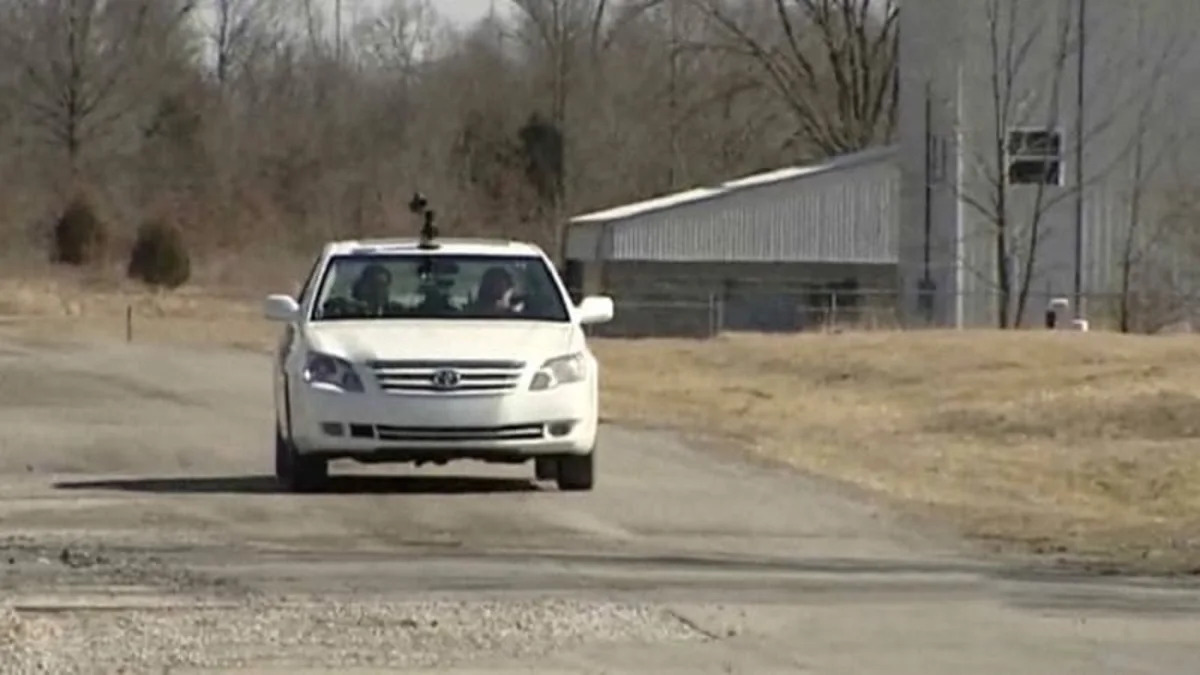Click above to view the video after the jump
Earlier today, ABC News released a report asserting that the cause of Toyota's unintended accelerations issues might not be a faulty accelerator mechanism, but an electronic flaw in the automaker's engine control unit – something that's been suspected, although never confirmed, for some time.
David Gilbert, an automotive technology professor at Southern Illinois University and ABC's primary source for the report, claims to be able to duplicate the effect by short-circuiting one of the controls, which could be caused by moisture, wear or a combination of factors in Toyota vehicles.
Although the report goes into specifics, seeing is believing, and ABC News has done just that, putting Brian Ross behind the wheel as Gilbert trips the switch. The results are rather shocking – particularly since the ECU doesn't record a fault. You can see it for yourself after the jump.
UPDATE: In response to the allegation that an electronic fault is the cause of the unintended acceleration issue, Toyota has released a statement saying that Gilbert talked with the automaker on the Feb. 16 after wiring a Toyota Tundra in a similar manner and causing the acceleration. Make the jump for the release and draw your own conclusions.

Tired of Toyota recall news? Try out the recall-free version of Autoblog.
The video meant to be presented here is no longer available. Sorry for the inconvenience.
PRESS RELEASE
Toyota's Statement in Regard to ABC News Story: Expert Recreates Sudden Acceleration in Toyota
Toyota spoke with Mr. Gilbert on February 16 in an effort to understand his concerns. During this discussion, Mr. Gilbert explained that he had connected a resistor between the output wires of the two accelerator pedal sensors on a Toyota Tundra. In other words, he had artificially introduced an abnormal connection between two otherwise independent signals coming from the accelerator pedal sensors. Mr. Gilbert advised Toyota that he believed that his intentional misdirection of these signals could cause the vehicle to accelerate unexpectedly.
In response to Mr. Gilbert's claim as communicated to Toyota, Toyota confirmed that what Mr. Gilbert described would not cause unintended acceleration to occur. In fact, under the abnormal condition described last week by Mr. Gilbert, if there is a short with low resistance between the two signals, the electronic throttle control system illuminates the "check engine" light and the vehicle enters into a fail-safe mode of engine idle operation. If there is a short with high resistance, outside the range of "check engine" light illumination, the accelerator pedal continues to be responsive to driver input and the vehicle will return to the idle condition when the foot is taken off of the accelerator pedal. Unintended acceleration would not occur.
After watching the story today on ABC News featuring Mr. Gilbert, Toyota was surprised to learn that Mr. Gilbert appears now to be making a different claim regarding the electronic throttle control system and in a vehicle other than as described to Toyota last week. Although it is difficult to tell from the footage used in the story, Mr. Gilbert appears to be introducing a different external and artificial method to manipulate the throttle. In order to set the record straight, Toyota welcomes the opportunity to evaluate the Toyota Avalon shown in today's story and the method by which Mr. Gilbert allegedly caused the vehicle to accelerate unintentionally. We welcome the attendance of ABC News at any such evaluation of this vehicle and Mr. Gilbert's testing.
The video meant to be presented here is no longer available. Sorry for the inconvenience.


Sign in to post
Please sign in to leave a comment.
Continue